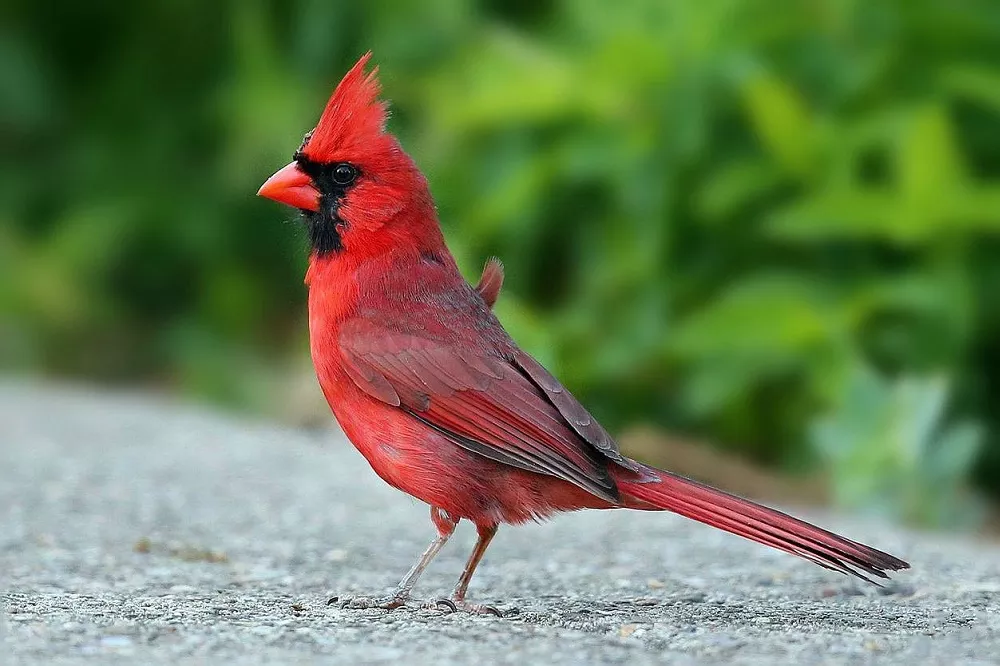The Northern Cardinal (Cardinalis cardinalis) is an iconic and cherished bird species found across North America. Alongside its vibrant plumage and enchanting melodies, the diet of the Northern Cardinal adds to its allure. In this article, we will embark on a journey to discover the culinary choices of these captivating birds, exploring their preferences for seeds, fruits, insects, and other delicacies.
Seeds: A Staple of the Cardinal’s Diet
Seeds form the cornerstone of the Northern Cardinal’s diet, making them primarily granivorous birds. Equipped with a strong, cone-shaped beak, they adeptly crack open a variety of seeds. Sunflower seeds are particularly favored by these birds, and they will readily consume them from bird feeders or forage them from the ground. Safflower and millet seeds are also relished by cardinals, providing a valuable source of nutrition. Their granivorous nature often leads them to habitats rich in seed-bearing plants, such as grasslands, gardens, and forest edges.
Fruits: A Delectable Treat
In addition to seeds, the Northern Cardinal has a penchant for fruits. These colorful birds delight in indulging in a wide array of berries and fleshy fruits. Dogwood, blackberry, raspberry, mulberry, and grape are among their preferred fruit choices. Fruits provide cardinals with essential nutrients and energy, particularly during the breeding season and when food resources are abundant. The consumption of fruits also contributes to the dispersal of seeds, making the Northern Cardinal an inadvertent participant in plant reproduction.
Insects: Protein-Rich Morsels
While seeds and fruits dominate their diet, Northern Cardinals supplement their nutrition with protein-rich insects and invertebrates. This dietary inclusion is especially important during the breeding season when cardinals require additional protein to nourish their growing offspring. These adept foragers employ their beaks to capture and consume various insects, such as beetles, ants, grasshoppers, and caterpillars. They may be observed foraging on the ground or plucking insects from foliage and branches. Additionally, cardinals may also consume invertebrates, including spiders and snails, further diversifying their protein intake.
Water: Essential Hydration
Like all living creatures, Northern Cardinals require water for survival. While they obtain moisture from the seeds and fruits they consume, natural water sources play a crucial role in their hydration. Puddles, streams, and birdbaths serve as drinking and bathing spots for these birds. Providing a clean and accessible water source can not only attract Northern Cardinals to your backyard but also ensure their continued presence and well-being.
Seasonal Variations: Adapting to Nature’s Bounty
The Northern Cardinal’s diet may exhibit variations throughout the year, influenced by the seasonal availability of food sources. During the breeding season, cardinals prioritize protein-rich foods, such as insects, to meet the nutritional needs of their growing nestlings. As seasons change and seeds and fruits become more abundant, their focus shifts accordingly. They take advantage of the natural bounty, consuming an increased quantity of seeds and fruits during these periods. While they primarily rely on natural food sources, Northern Cardinals readily adapt to human-provided seed offerings, often frequenting bird feeders where they can readily access an assortment of seeds.
Conservation and Nurturing Cardinal-Friendly Environments
Understanding the dietary preferences of Northern Cardinals not only deepens our appreciation for these remarkable birds but also allows us to play a role in their conservation. By providing a diverse array of seed offerings, fresh water sources, and native plants in our yards and gardens, we can create habitats that attract and support Northern Cardinals. Native plants, in particular, provide a natural and sustainable source of seeds and fruits, benefiting not only cardinals but also other native bird species.
Conclusion:
The Northern Cardinal’s dietary preferences reflect its adaptability and resourcefulness in navigating a diverse array of food sources. From seeds and fruits to insects and invertebrates, these birds exhibit a versatile palate. Understanding their culinary choices enhances our appreciation of their ecological role and offers opportunities to attract and support them in our backyards. By providing a nourishing environment rich in natural food sources and water, we can invite the beauty of the Northern Cardinal into our lives and contribute to their overall well-being and conservation efforts.
Related topics:
- How long do Northern Cardinals live?
- What is a Northern cardinal?
- Where Do Cardinals Sleep at Night?


 Facebook
Facebook  Instagram
Instagram  Youtube
Youtube 